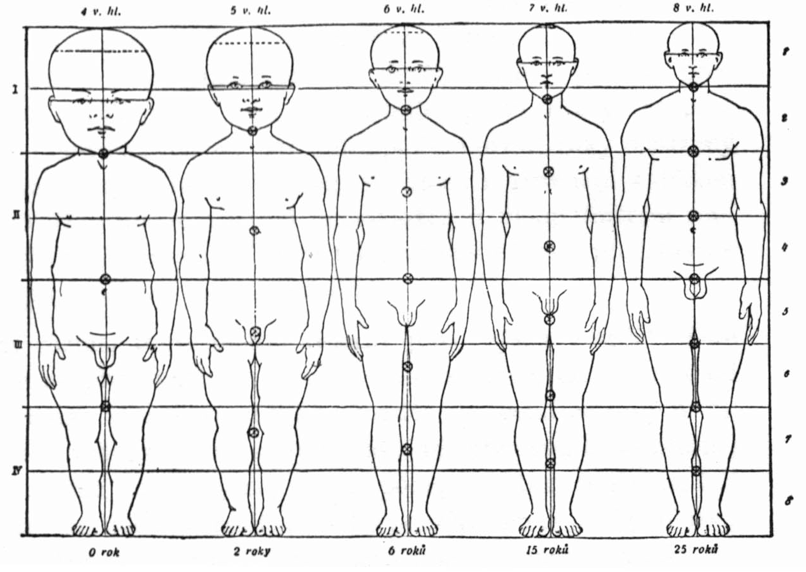
Principles of Development.
Sequence Rules of Human Motor Skills Development According to Gessell (1945).
Overview of Possible Trends in Further Development.
Basic Terminology in Motor Development
Phylogenesis: development of humans lasting for millions of years
Ontogenesis: individual development lasting for tens of years (current genesis – development lasting for hours or days)
Growth: quantitative (measurable) changes mainly during the period preceding adulthood
Development: qualitative changes (motor skills)
Progress: intentional and controlled development of some of functional quality of organism
Heredity (genetic apparatus of an individual): innate preconditions of an individual (biogenetic background)
Environment (exogenous factor in development): acquired preconditions of an individual (paragenetic, social, …)
Principles of Development
Principle of completeness and unity of organism: changes in motor functions are closely related to other changes.
Principle of conclusiveness and unrepeatability: time sequence of irreversible changes (stages, phases, periods of development).
Principle of differentiation and specialization: cell (muscle intersection), organ (lungs), functional (stretching) differentiation influenced by physical activity (differentiation increases with age).
Principle of inequality: increment in development changes is different in different periods (childhood, puberty).
Principle of asynchrony: periodicity (alternating periods of quick development and periods of relative tranquility), alternation (alternating development of individual organs, functions, etc. – see Sensitive period)
Principle of unity of organism and environment: development is a biological process which is connected with environment (society and family atmosphere significantly influences the quality and quantity of child motor skills).
Sequence rules of motor development (Gessell, 1945)
A Cephalocaudal Principle: development proceeds from head downwards (growth ratio, motor development – raising head, sitting, ..).
B Central-peripheral Principle: development proceeds from center to periphery (hip, knee, ankle, toes).
C Principle of Reciprocal interconnection: parallel development of opposite structures (flexor – extensor).
D Principle of Functional Asymetry: higher level of motor development referred to as lateral preference (armhood, leghood, sinuosity,…)
E Individualization Principle: uniqueness and unrepeatability of individuals in their complete development
F Principle of Autoregulative Fluctuation: development is not direct but it oscillates around a spiral, random fluctuation is balanced by the organism itself with the help of autoregulation.
FIg. 4 Possible Trends in Motor Development (Vobr, 2001)
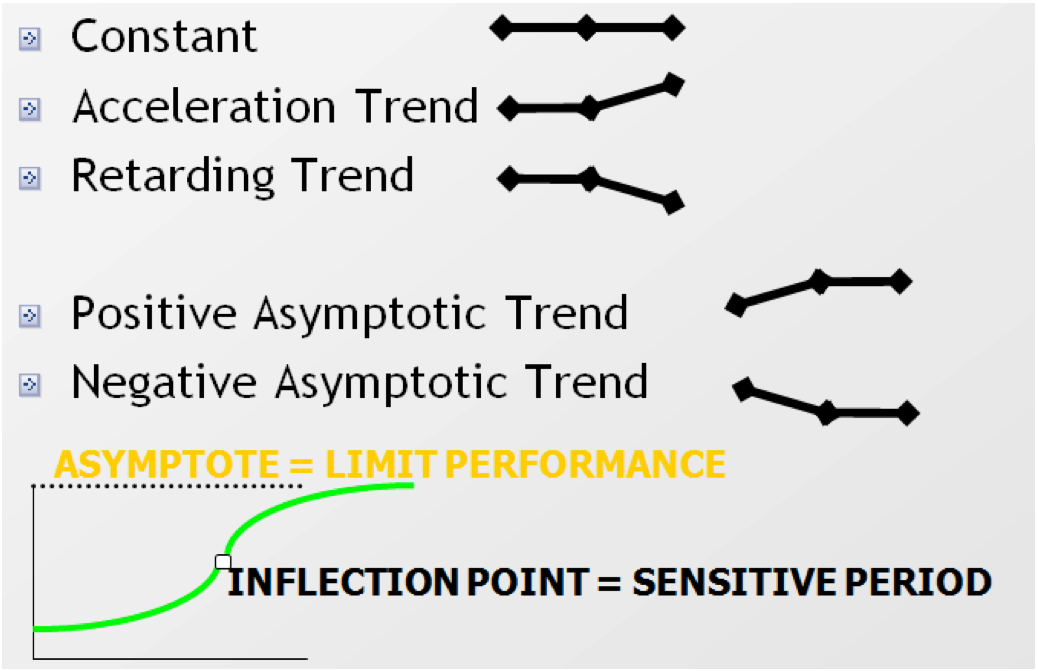
Ways of Tracking Motor Development
Sectional tracking: measuring of all age groups in one year (comparative study)
Longitudinal tracking: measuring of one group each year (development nomographs for predicting individual development, casuistry - tracking n = 1)
Combined sectional and longitudinal: more age groups every year (1,3,5 – 4 years).
Tracking with time delay: measuring after the age in question has been reached (trend in group population, height in recent 50 years by 8 cm)
Fig. 5 Karlberg’s ICP Model of Human Growth (Riegrová, Ulbrichová, 1998, 72)
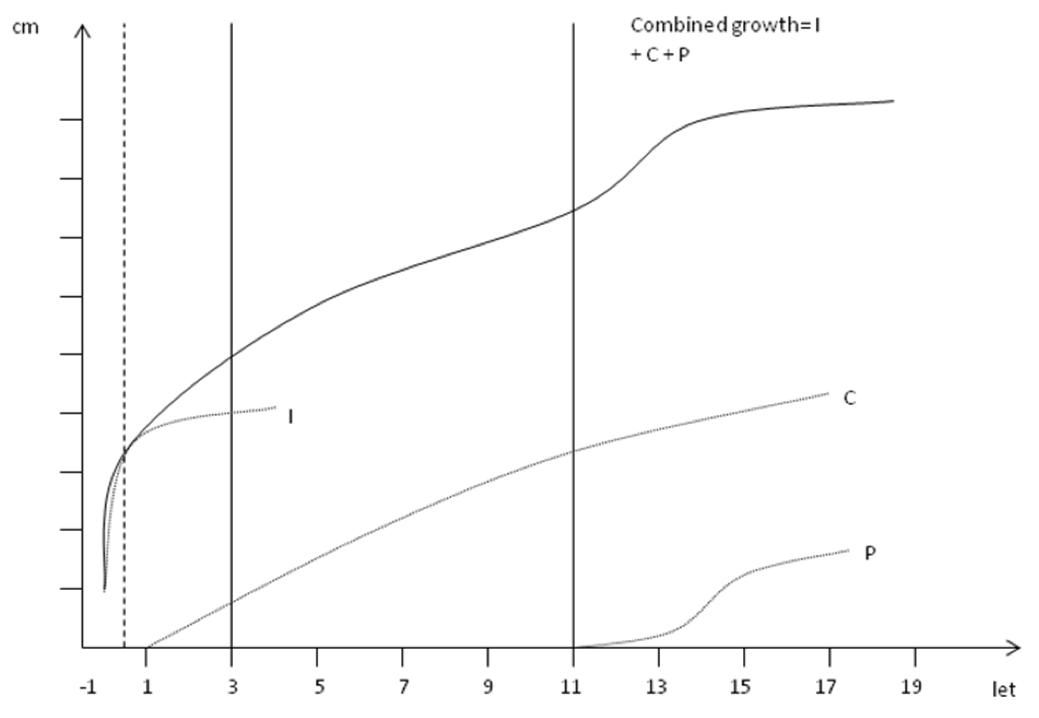
Fig. 6 Annual Increase in Body Height and Weight which Characterize Growth Dash (Matiegka, 1927, 77)
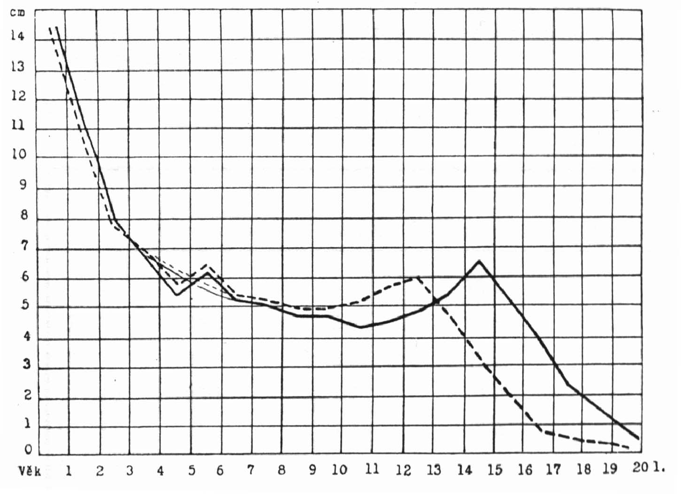
Fig. 7 Growth Graphs (Lhotská and coll., 1993, 184-185)
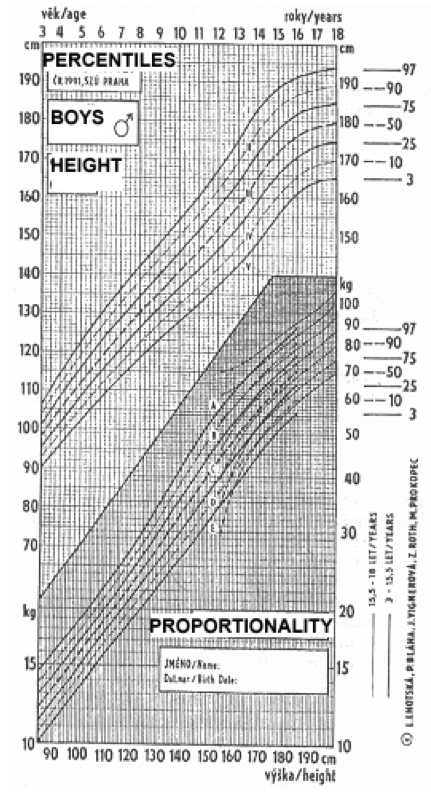
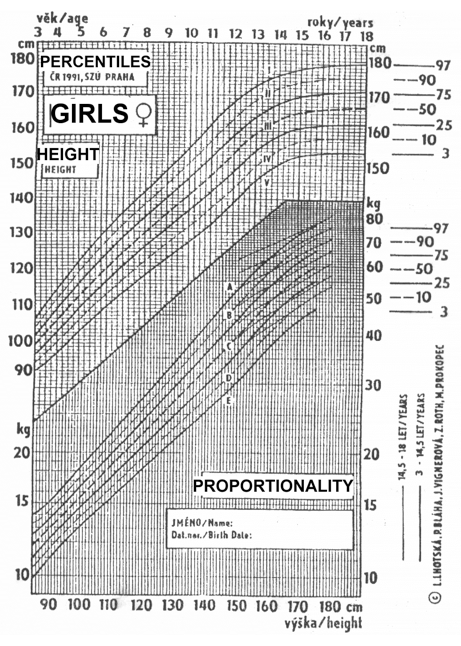
Fig. 8 Changes in Proportionality of Human Body (Matiegka, 1927,138)
